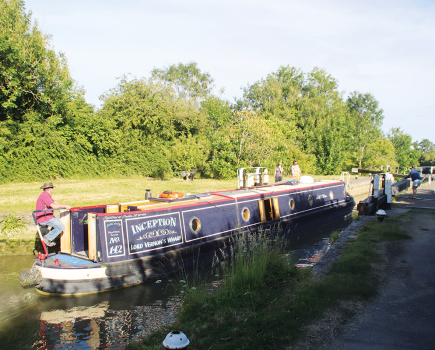Two reports have been published about last year’s structural failure at Toddbrook Reservoir
Two reports into last year’s structural failure at Toddbrook Reservoir which led to the precautionary evacuation of 1,500 people from Whaley Bridge have been published – and the upshot is that there will be some large amounts spent on the Canal & River Trust’s reservoirs in the coming years to deal with any potential similar issues.
Following the failure of the reservoir dam’s auxiliary spillway after exceptionally heavy rain (but well within the range that the spillway was designed to carry), a CRT internal investigation and an external Government study were launched with the aims of uncovering the causes of the failure, finding out why regular external investigations hadn’t highlighted the issues, and making recommendations to prevent a recurrence either at Toddbrook or on any other reservoir.
The reports (both written by dam experts external to CRT) have come to the conclusion that the concrete auxiliary spillway (added to the face of the dam in the 1960s after a flood proved too much for the existing main overflow spillway situated at one end of the dam) was inadequately specified and built. Faults included:
. The concrete slabs forming the spillway base were too thin and insufficiently reinforced
. The horizontal joints between the slabs were waterproofed and secured by dowels, but not the joints running up and down the spillway
. There was no ‘cut-off’ (a waterproof barrier between the spillway base and the earth dam’s clay core) to prevent any water from getting underneath the base
. There were inadequate relief holes to let out any water that got underneath
. The spillway narrowed inwards on one side, creating an area where the impact of heavy water flows would be concentrated
. The walls and base were inadequately linked together
As a result, when natural settlement of the dam (which occurs at perhaps 1-2mm per year) resulted in a gap under the spillway crest, water could get under it and wash out soil from underneath, creating voids. As the heavy rain on 31 July – 1 August 2019 overloaded the main spillway and began to flood over the auxiliary spillway, sufficient water penetrated under the base to raise one of the lower concrete slabs – following which there was a progressive failure as material was washed out and more unsupported slabs collapsed into the resulting void.
In addition to the inadequacy of the design, the Government report highlighted “intermittent maintenance over the years,” including failure to repair cracks in the concrete, clear vegetation, seal joints and clear pressure relief holes, which might between them have prevented the damage – although it also says that they wouldn’t have enabled the structure to withstand the theoretical worst possible weather.
Meanwhile the CRT report’s author felt that the ten-yearly statutory external inspections over the years had failed to identify the problems despite early indications. And the most recent one in 2018, which had finally raised these issues, indicated the work required and given an 18-month deadline for completion, had unfortunately failed to convey its urgency or importance to CRT’s engineers – as a result of which it was still on the ‘waiting to be done’ list.
The Government report makes a list of recommendations, including that the Environment Agency commissions new guidance on spillway inspections and possible failures, that inspectors examine spillways more closely and frequently and should not rely on previous reports, that recommendations should make the seriousness and urgency clear, that dam owners should be made more aware of the vulnerability of spillways to poor maintenance, and that the EA should urgently seek to identify any reservoirs with potentially similar spillway characteristics to those at Toddbrook.
CRT has acknowledged that maintenance of the spillway in some periods “might have been more stringent”, albeit the spillway could have failed in an extreme weather event regardless. The Trust has set aside an extra £30m for reservoir work over the next three years (on top of it £25m major works programme), and in the meantime has been reviewing the design features of all its reservoirs to identify which ones need work, while managing water levels to remove risk pending the completion of the reviews, and improving reservoir monitoring and vegetation management.







